
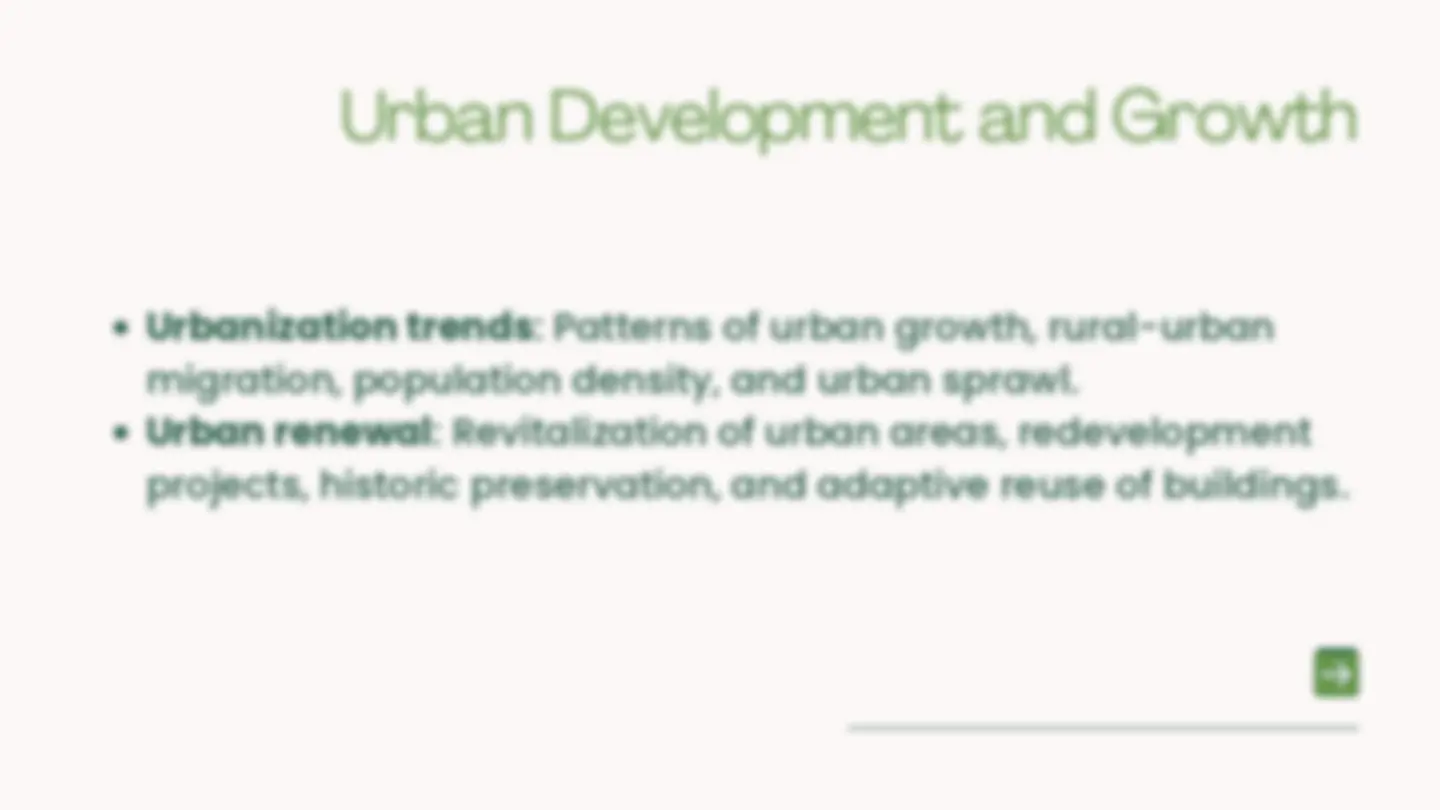
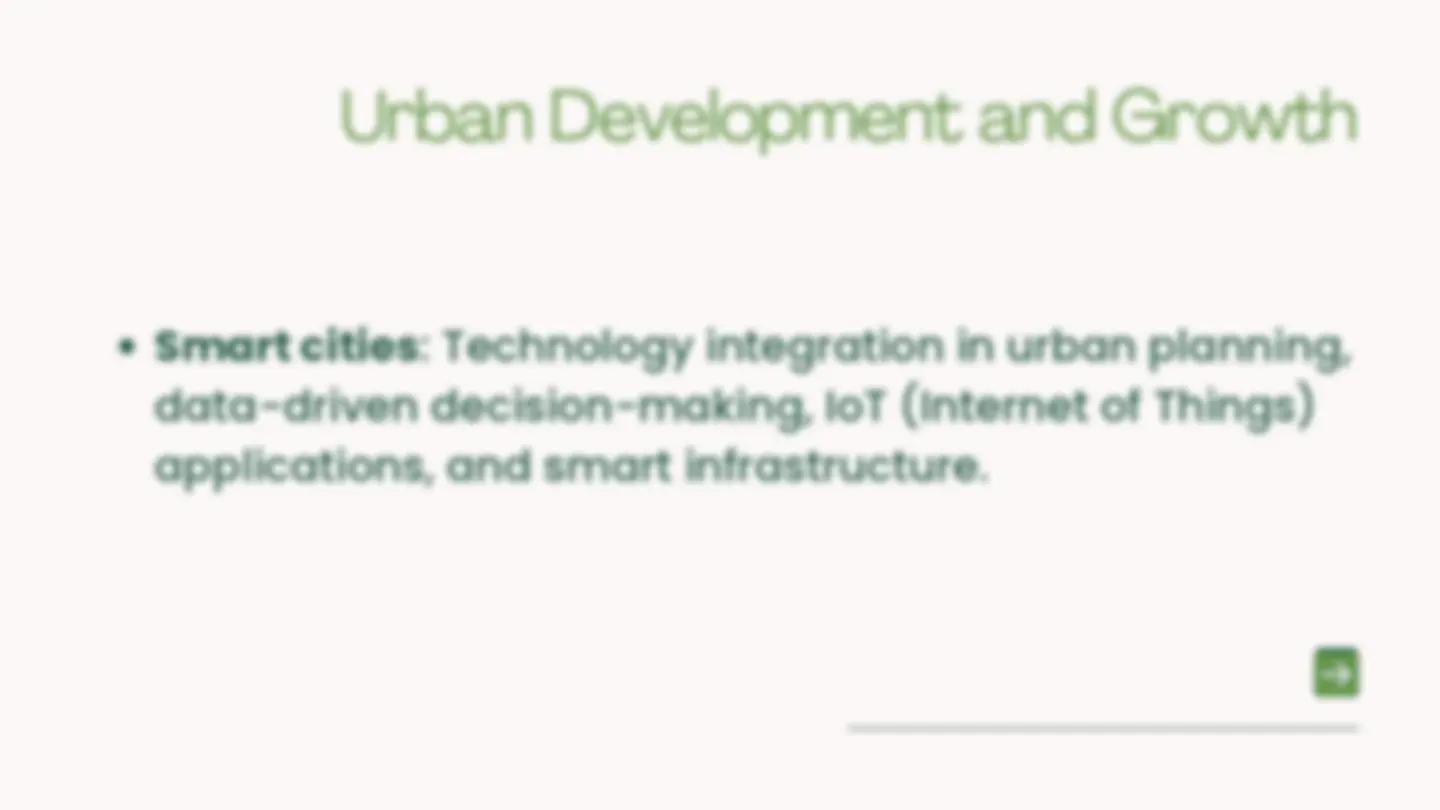
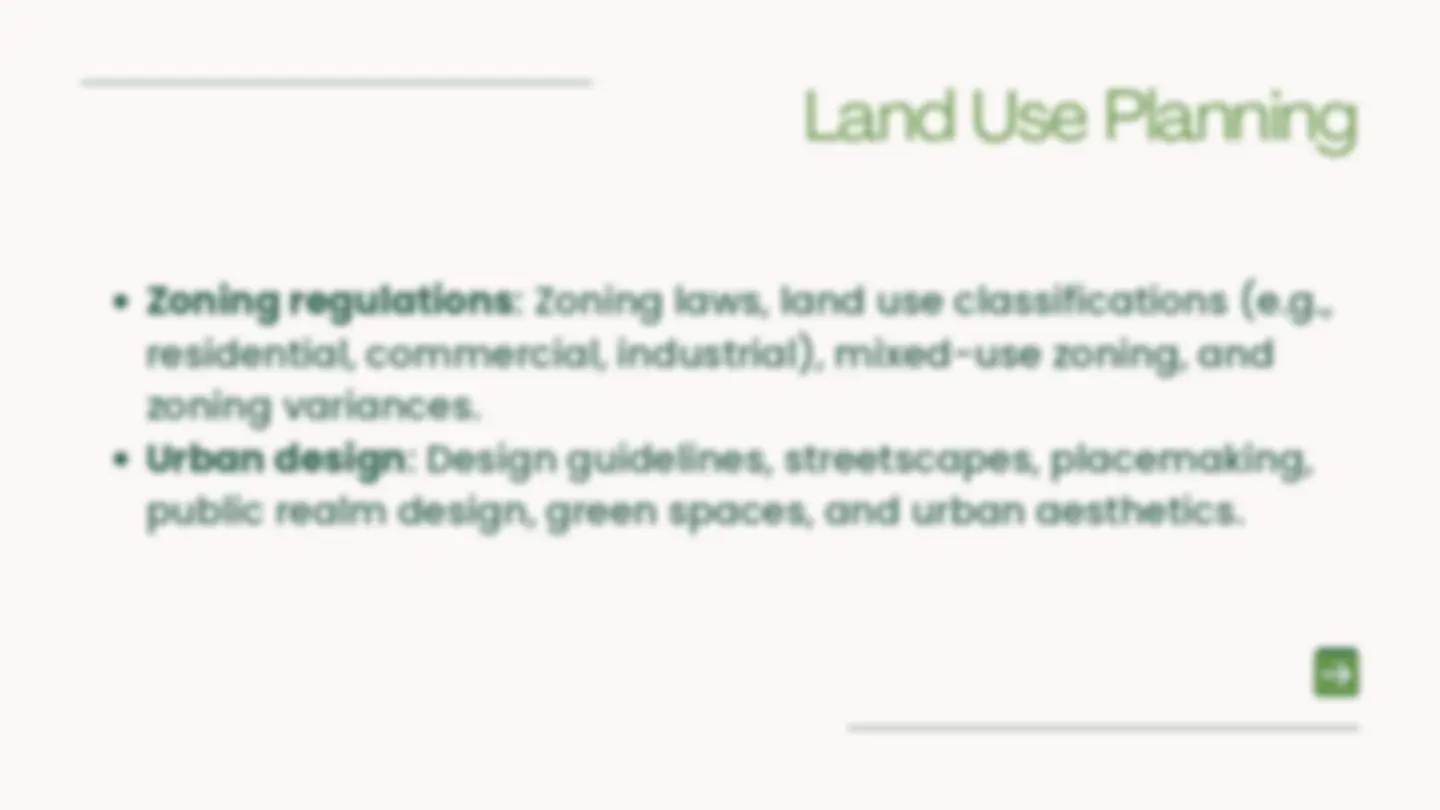
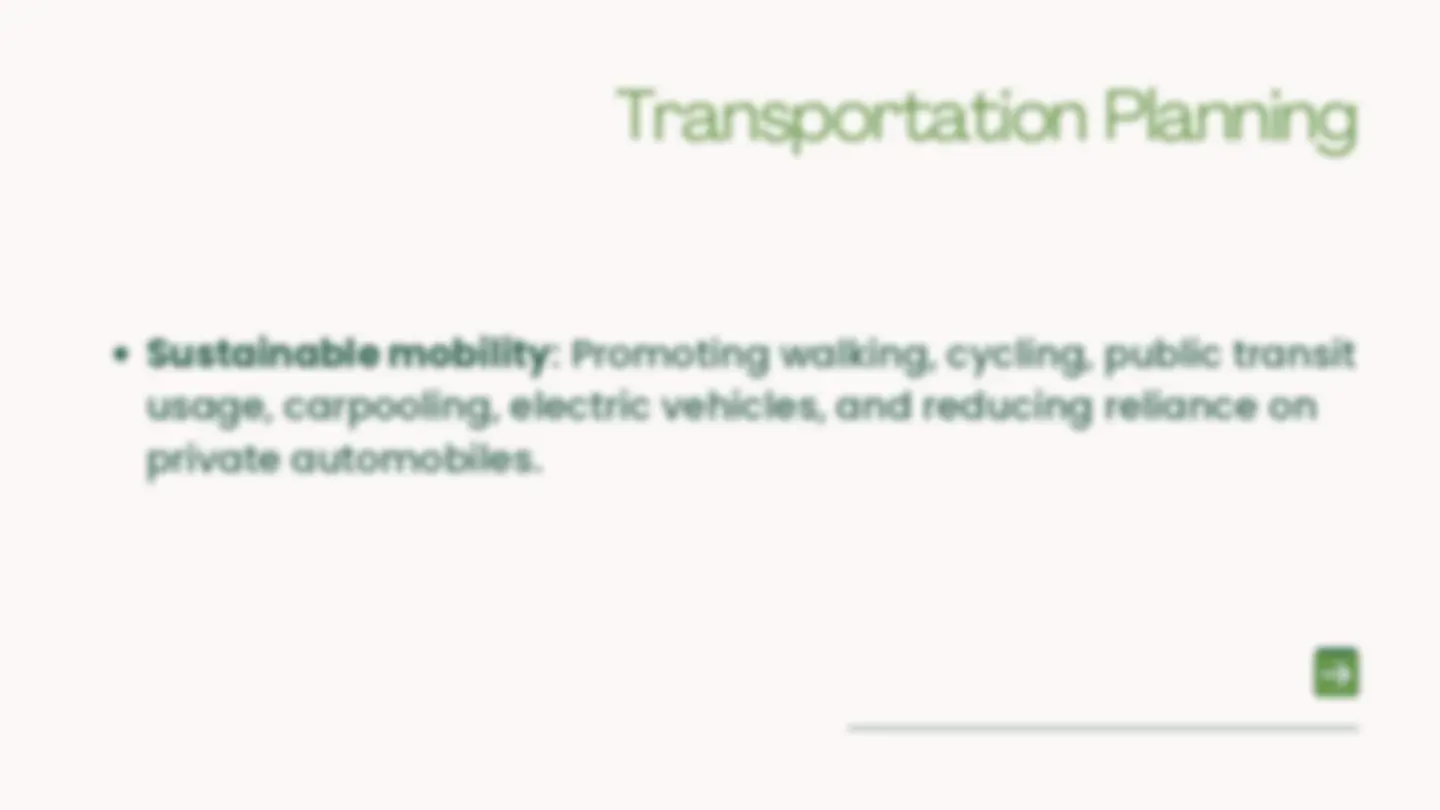
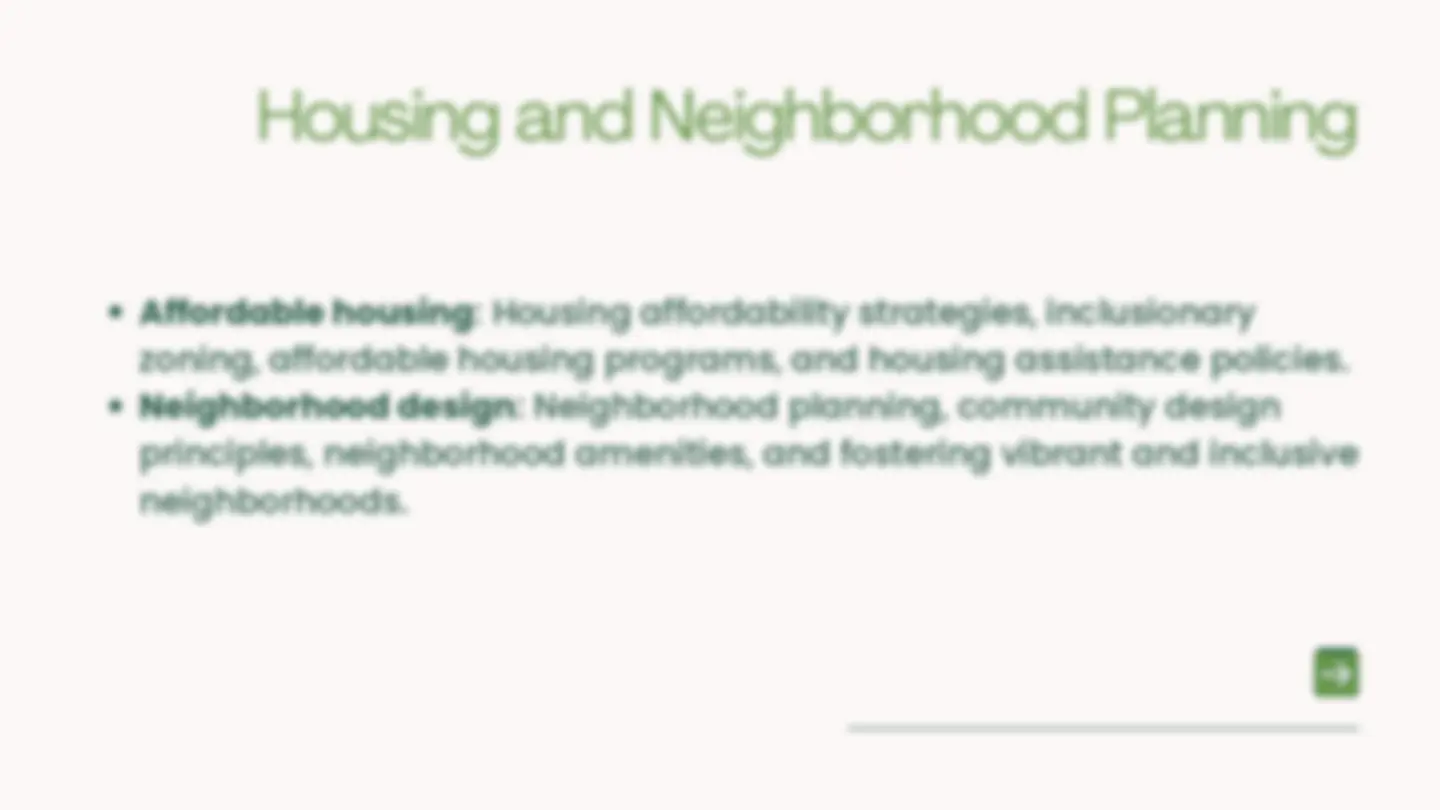
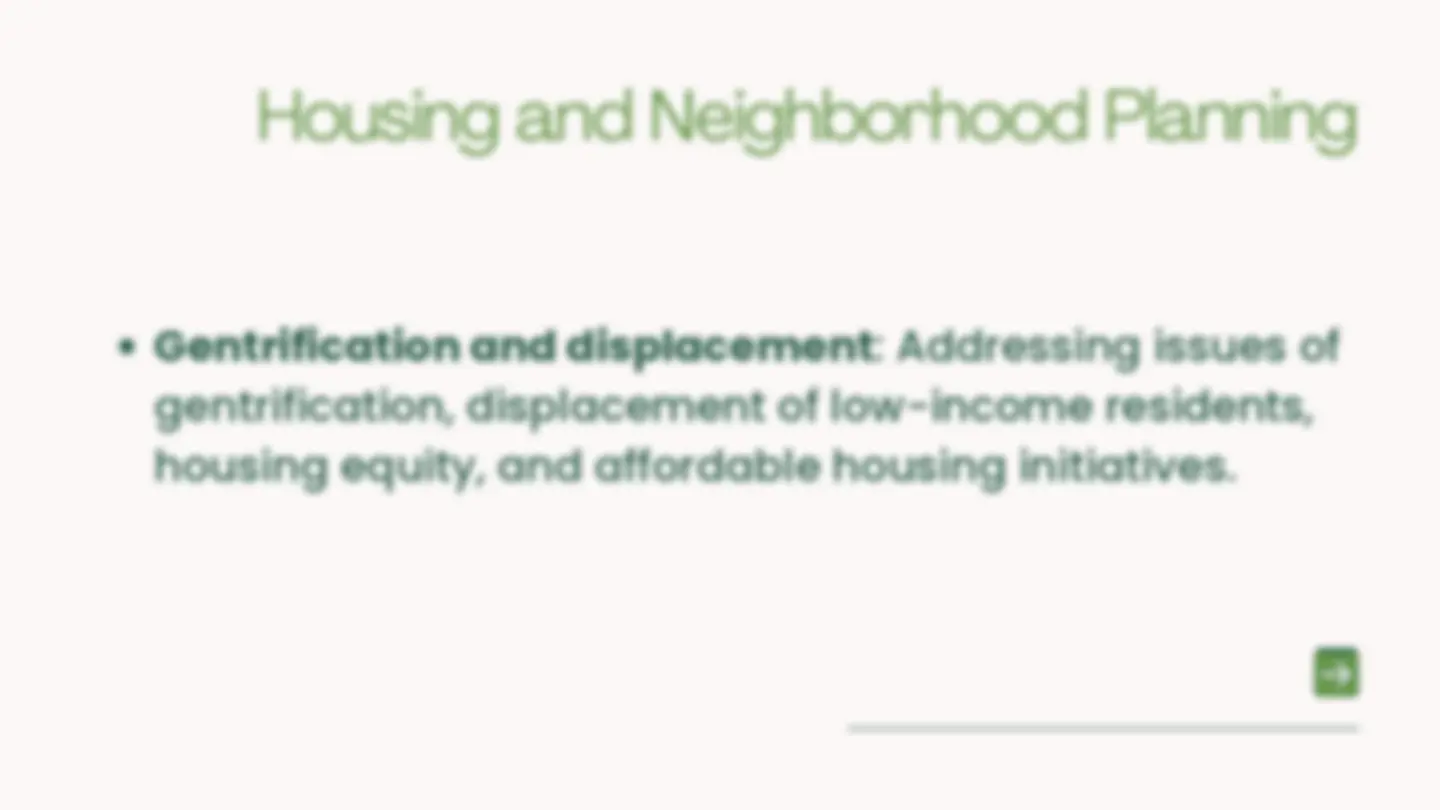
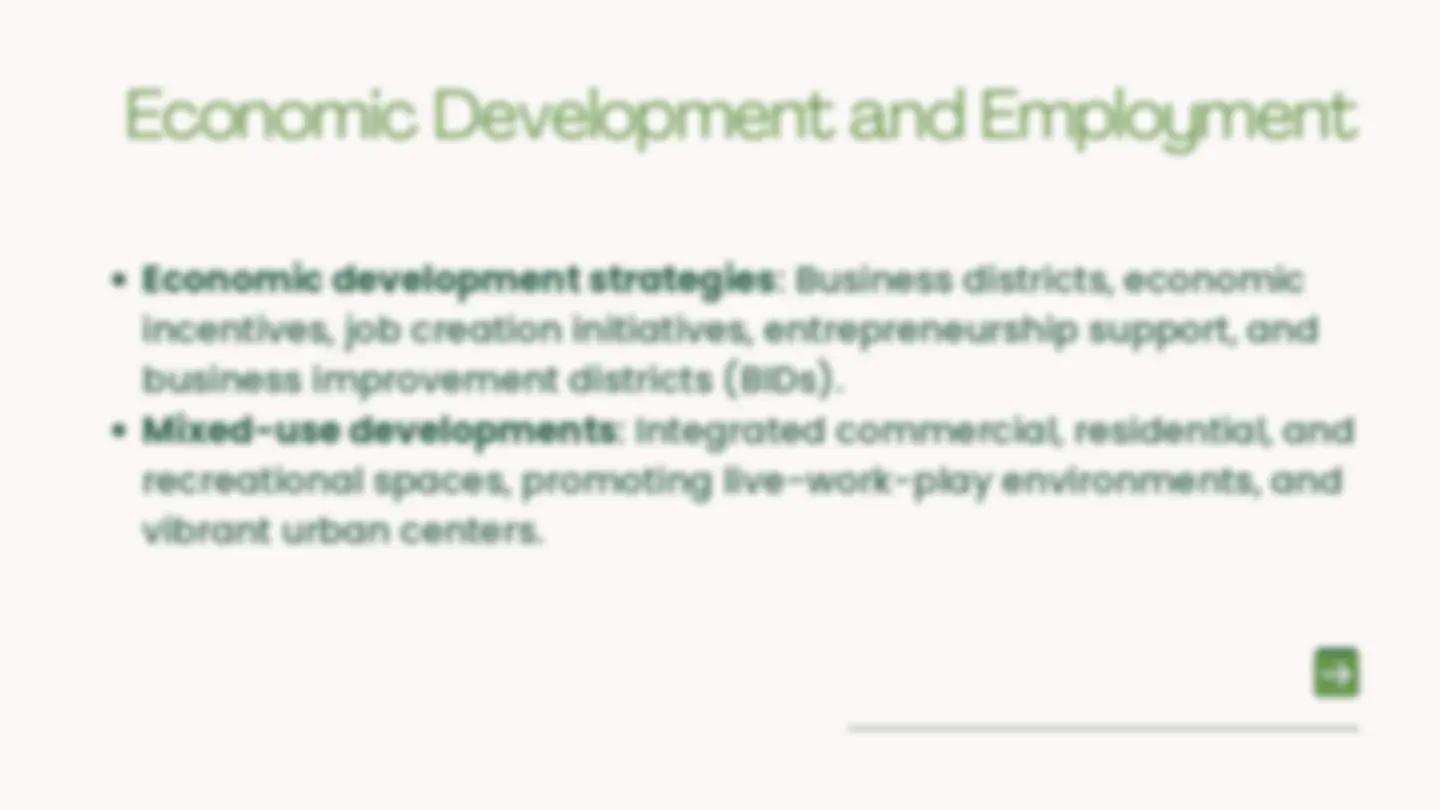
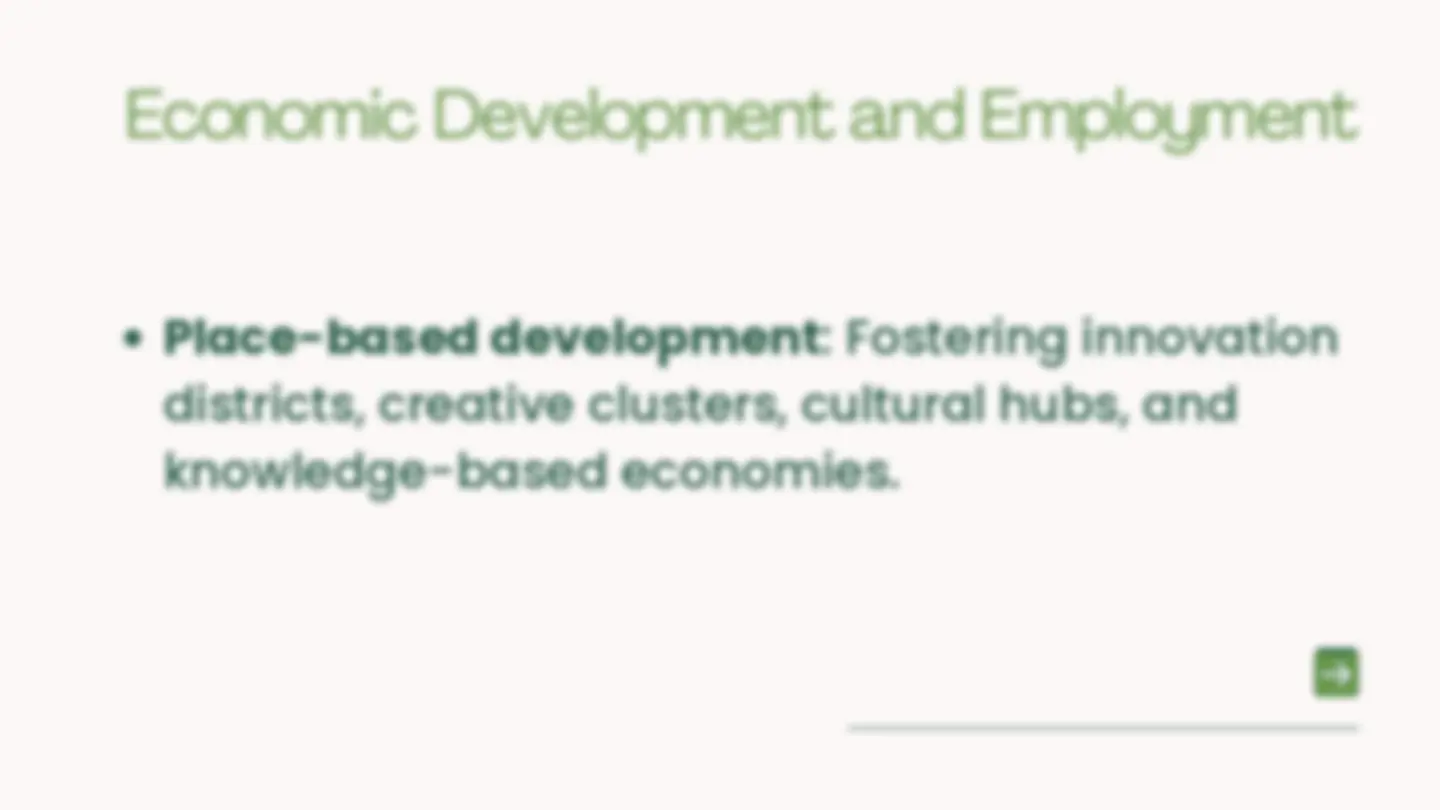
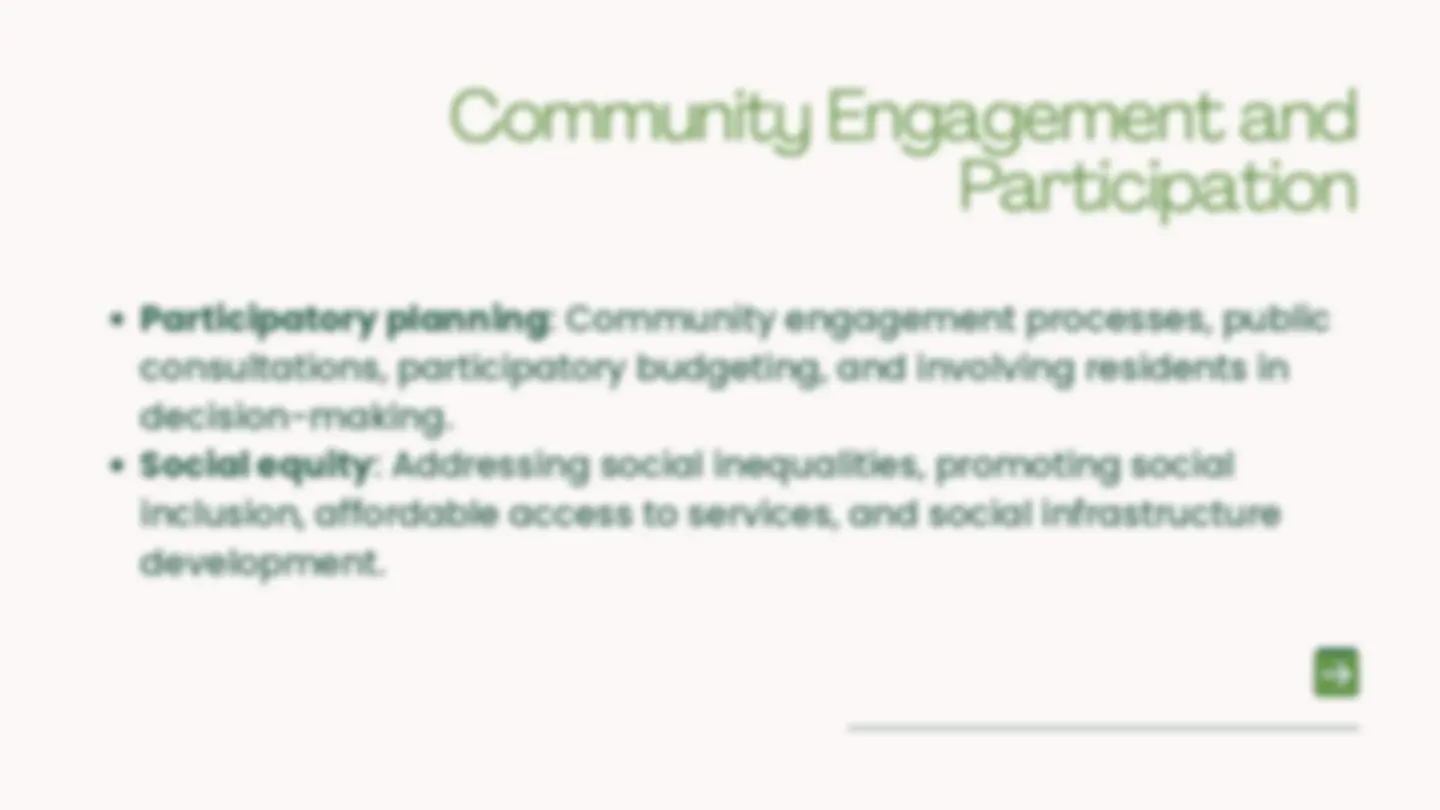
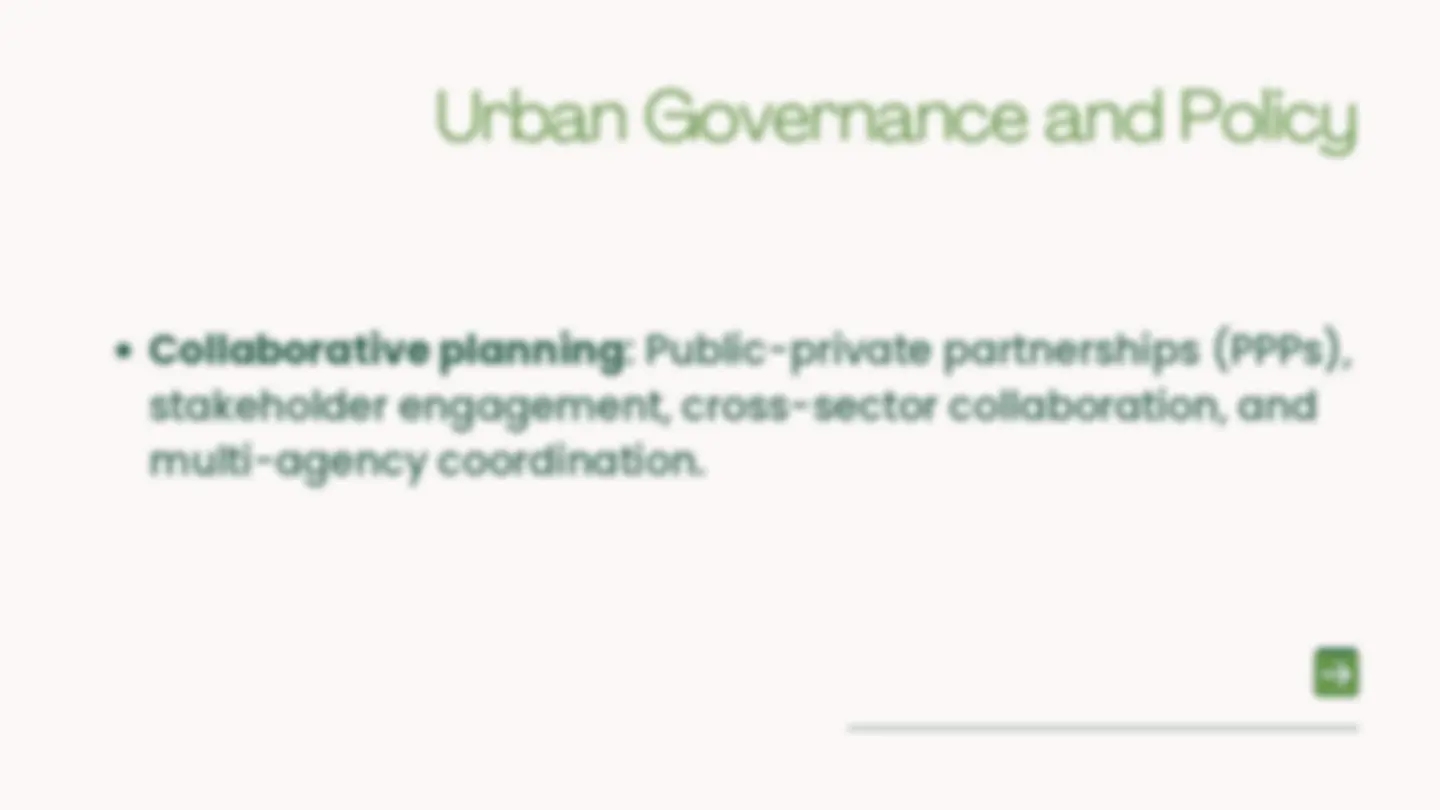
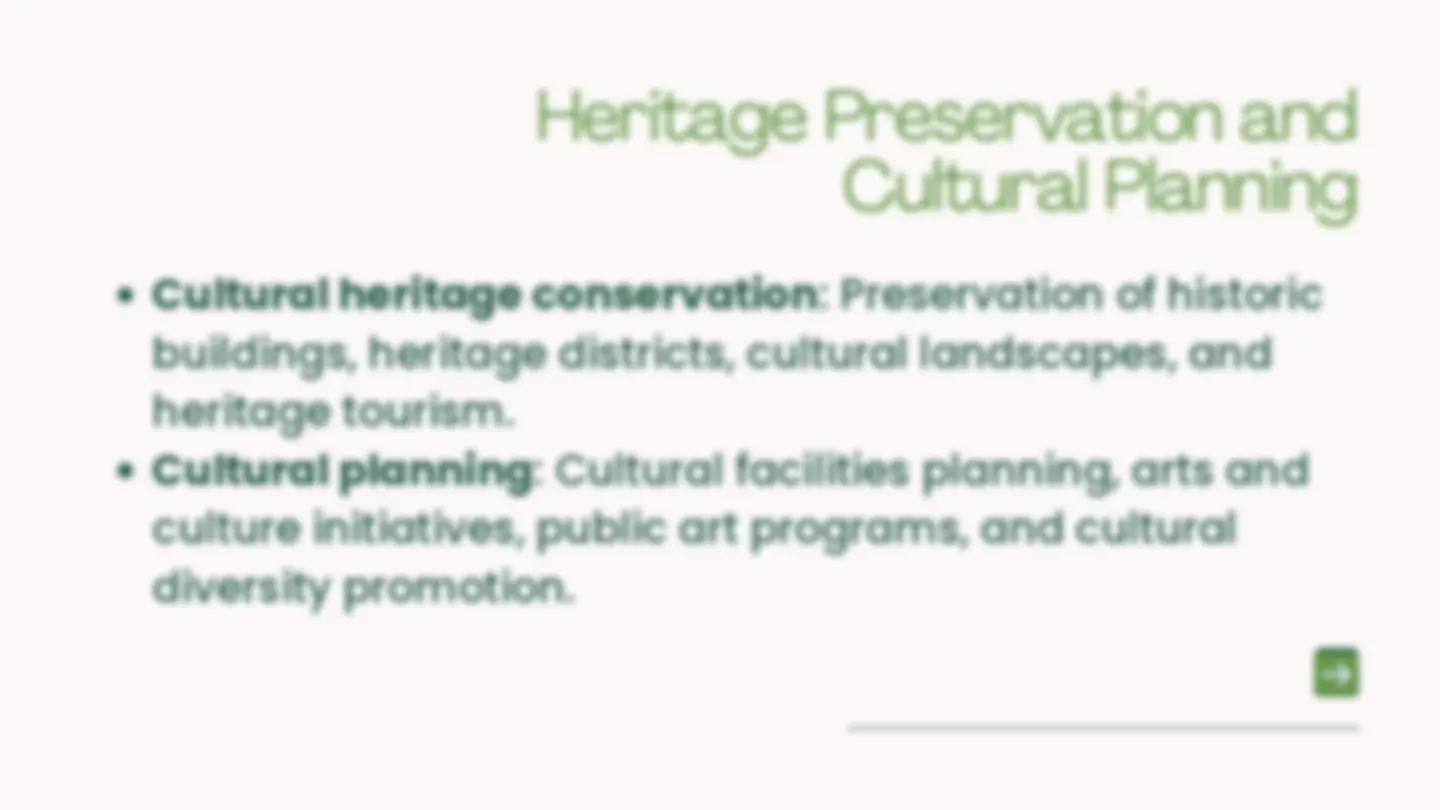
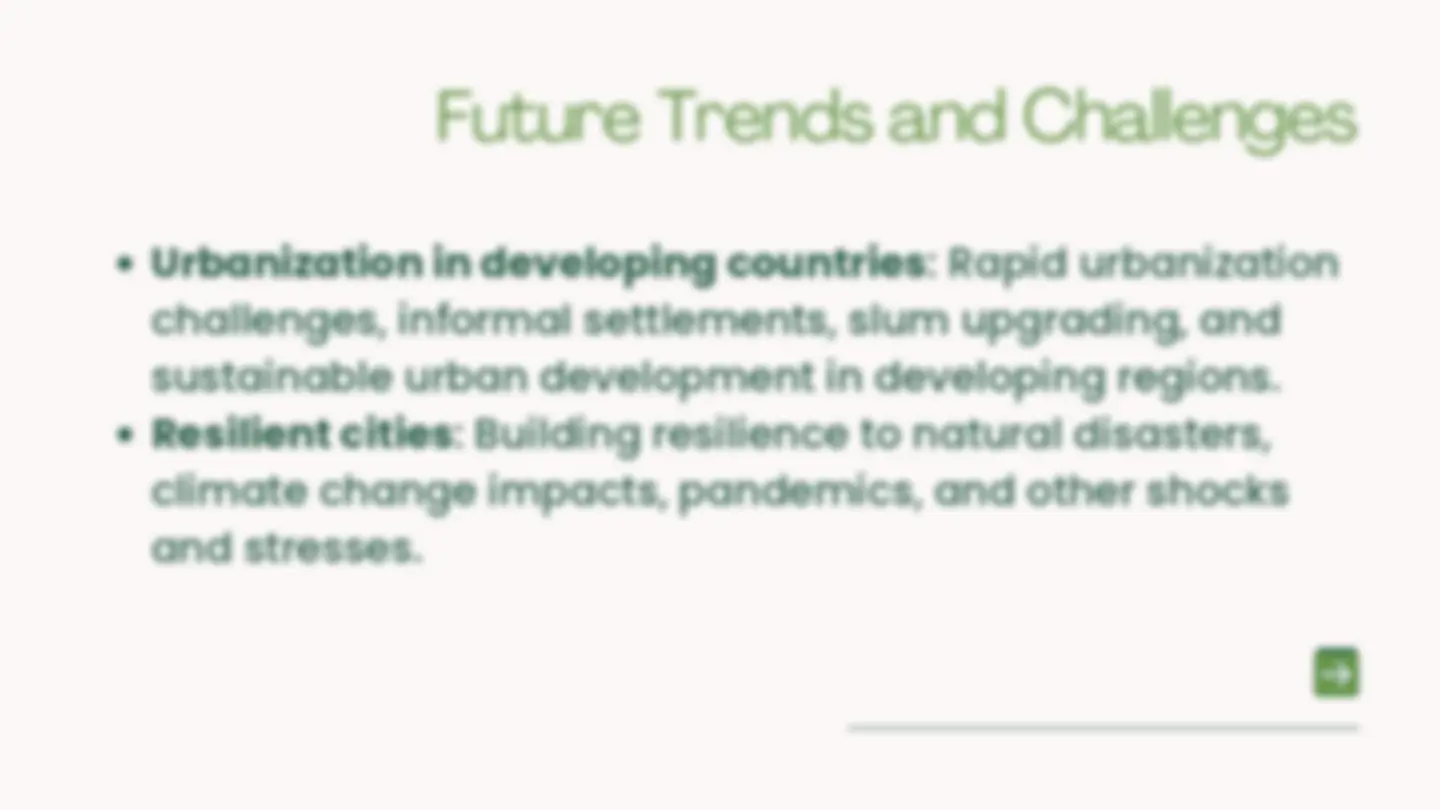

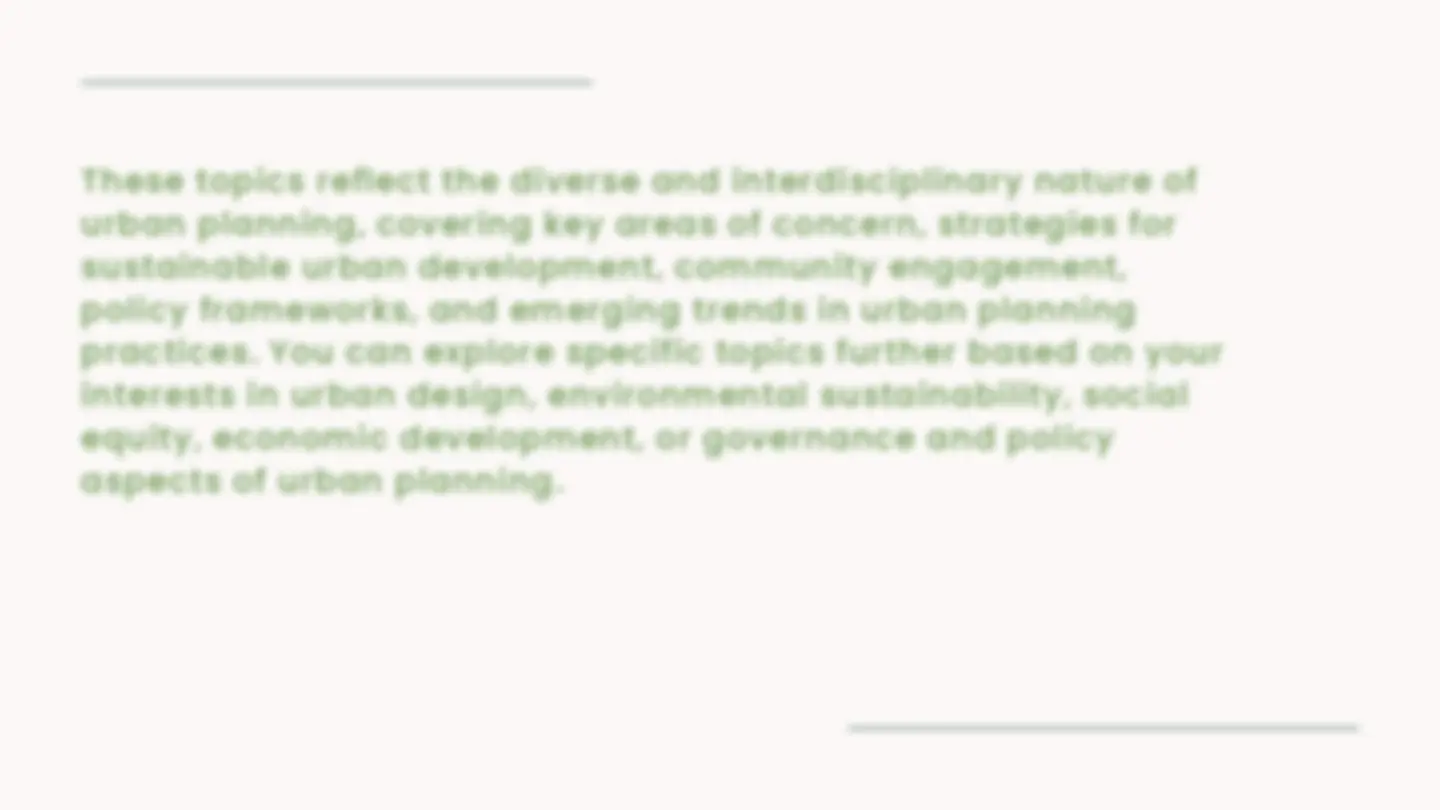



Study with the several resources on Docsity

Earn points by helping other students or get them with a premium plan


Prepare for your exams
Study with the several resources on Docsity

Earn points to download
Earn points by helping other students or get them with a premium plan
Community
Ask the community for help and clear up your study doubts
Discover the best universities in your country according to Docsity users
Free resources
Download our free guides on studying techniques, anxiety management strategies, and thesis advice from Docsity tutors
This presentation provides an in-depth exploration of urban planning, focusing on the principles, strategies, and challenges of creating sustainable and livable urban environments.
Typology: Slides
1 / 23

This page cannot be seen from the preview
Don't miss anything!
















Presented by: Abigail Atiwag
Urban planning is a multidisciplinary field focused on designing and shaping cities, towns, and communities to achieve sustainable, equitable, and functional urban environments. It involves various aspects such as land use, transportation, infrastructure, housing, public spaces, environmental sustainability, and community development. Here are some topics related to urban planning that you might find interesting:
Zoning regulations : Zoning laws, land use classifications (e.g., residential, commercial, industrial), mixed-use zoning, and zoning variances. Urban design : Design guidelines, streetscapes, placemaking, public realm design, green spaces, and urban aesthetics.
Transit-oriented development (TOD) : Planning around transit nodes, pedestrian-friendly design, mixed-use developments, and transit-oriented policies. Transportation infrastructure : Roads, highways, bridges, public transit systems (e.g., buses, subways, light rail), cycling infrastructure, and pedestrian pathways.
Sustainable mobility : Promoting walking, cycling, public transit usage, carpooling, electric vehicles, and reducing reliance on private automobiles.
Green infrastructure : Urban green spaces, parks, green roofs, rain gardens, sustainable drainage systems (SuDS), and urban forestry. Climate resilience : Climate change adaptation strategies, resilient infrastructure, floodplain management, and heat island mitigation.
Economic Development and Employment Economic development strategies : Business districts, economic incentives, job creation initiatives, entrepreneurship support, and business improvement districts (BIDs). Mixed-use developments : Integrated commercial, residential, and recreational spaces, promoting live-work-play environments, and vibrant urban centers.
Economic Development and Employment Place-based development : Fostering innovation districts, creative clusters, cultural hubs, and knowledge-based economies.
Community development : Empowering communities, capacity building, community-led initiatives, and grassroots planning efforts.
Cultural heritage conservation : Preservation of historic buildings, heritage districts, cultural landscapes, and heritage tourism. Cultural planning : Cultural facilities planning, arts and culture initiatives, public art programs, and cultural diversity promotion.
Urbanization in developing countries : Rapid urbanization challenges, informal settlements, slum upgrading, and sustainable urban development in developing regions. Resilient cities : Building resilience to natural disasters, climate change impacts, pandemics, and other shocks and stresses.